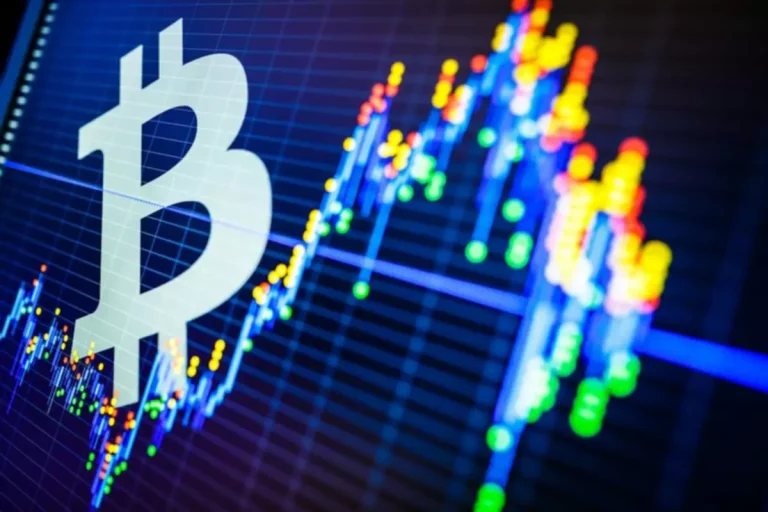High-frequency Trading: Meaning, Methods & Advantages
High-frequency Trading: Meaning, Methods & Advantages
High-Frequency buying and selling can execute a quantity of 1000’s of orders by shopping for an enormous variety of shares and promoting them within the blink of a watch. The solely thing the investor does is to press a button and watch the earnings move. Investment banks, hedge funds, and institutional buyers use high-frequency buying and selling as an automatic buying and selling platform. Risk Disclosure – Futures buying and selling contains substantial danger and is not for each investor. An investor could probably lose all or more than What Is High-Frequency Trading the initial investment.
Outstanding High Frequency Trading Firms In India

The origin of HFT was a response to develop techniques that could capitalize on short-lived opportunities via speedy transaction execution. HFT plays an essential function in modern markets because it contributes to liquidity and pricing effectivity. One primary advantage of HFT is its ability to shortly capitalize on momentary worth anomalies. However, one limitation is that it could exacerbate volatility in periods of high market stress because of the massive order flows generated by HFT algorithms. Understanding both the origins and methods employed in HFT helps market individuals better navigate today’s extremely electronic monetary system. High-frequency buying and selling (HFT) operates on complicated algorithms that analyse market knowledge in real-time to execute trades at lightning-fast speeds.
What Are Some Controversies About Hft?
High frequency buying and selling is a kind of buying and selling by which highly effective computers are utilised to execute large volumes of trades in a really short time-frame. In excessive frequency trading, algorithms play a crucial position in initiating transactions once the market hits the predefined parameters. In this text, we shall talk about the idea of high-frequency trading, its pros and cons, and key methods.
Value Motion Flips – Help And Resistance Buying And Selling Technique
Detractors argue that HFT provides an unfair edge to well-capitalised firms with entry to sophisticated expertise, probably at the value of individual investors. Balancing HFT’s contributions to market efficiency with the necessity for a fair and transparent financial system is essential to ensure the integrity of the buying and selling surroundings. Algorithmic Trading is the process of utilizing pre-programmed trading directions to execute trading orders at high speed in the financial market. Investors and merchants use buying and selling software program and feed it trading instructions primarily based on time, volume and worth.
The high-speed algorithms used in high-frequency trading sometimes purpose to revenue from minor expansions or closures in the bid-ask spreads. However, HFT strategies may also be implemented for shorting in a falling market. Algorithmic Trading is the automated trading course of that makes use of pre-programmed trading instructions to transact trade available in the market. The pre-programmed directions are fed into buying and selling software, based mostly on the volume, time, value, etc.
Their big transaction volumes and razor-thin margins carry out reliable market-making capabilities. HFT strategies require complicated statistical algorithms coded by top programmers. Recruiting and retaining quantitative specialists and developers drives up compensation costs. Specialized business software for trading, risk management, and surveillance also entails licensing bills. Monitoring all methods in real-time for each performance and security requires vital personnel. Of course, even with near-perfect technical accuracy, the predictive accuracy of the underlying algorithms has limits.

With a new demat account, you can take part on this fast-paced trading area in India. HFT provides numerous benefits that can enhance market effectivity and liquidity. This occasion exhibits how much of a snowball effect HFTs have on the markets. When one huge sell-off occurs, HFT traders using comparable methods sell off as nicely with dangerous implication for markets. Traders with the fastest execution speeds are usually more profitable than those with slower execution speeds. HFT can be characterised by excessive turnover rates and order-to-trade ratios.
High-frequency trading and its capacity to process vast quantities of knowledge and execute trades with precision at speeds unimaginable for people has transformed the way trading is conducted. While it provides quite a few advantages, such as increased effectivity and decreased buying and selling prices, it additionally raises issues about market fairness and stability. Even if the value fluctuates by Rs 1 or 2, it becomes a worthwhile venture for someone enterprise high-frequency buying and selling. All the choices relating to portfolio allocation are made by artificial quantitative models. Among high-frequency merchants, the competition is between who can execute the very best number of trades within the least amount of time. Other common HFT strategies embody latency arbitrage, liquidity detection, quote stuffing, spoofing, and momentum ignition.

Additionally, critics argue that HFT may give an unfair advantage to corporations with sooner and more sophisticated expertise, probably disadvantageous to individual buyers and smaller firms. Given the high quantity and high speeds in algorithmic trading methods like HFT, threat management is extraordinarily essential. One careless market transfer and you could face substantial losses that could probably be compounded by the large quantity of trading concerned.
The laptop hardware and connectivity wanted to execute trades in microseconds is enormously costly. HFT corporations make investments closely in highly effective servers, CPUs, GPUs, and networking gear tailor-made for velocity. Co-locating servers in the same premises as exchanges enable for decreasing latency however add large lease and knowledge feed costs. The fastest connections using microwave/laser expertise between key hubs like Mumbai and Delhi reportedly cost over Rs a hundred and forty crore per link. Ticker tape buying and selling includes algorithms that monitor information and market knowledge to commerce on significant occasions earlier than they’re fully priced into securities.
Low-frequency trading (LFT) is a type of buying and selling that contrasts with high-frequency buying and selling (HFT). While HFT is characterised by excessive volumes of trades executed at incredibly quick speeds, LFT is characterized by a extra measured method. LFT usually involves making fewer trades over an extended interval, with a spotlight on fundamental evaluation, long-term funding methods, and risk administration.

Rapid trading exercise can exacerbate price swings and result in flash crashes. Regulatory measures and risk administration practices are important to mitigate these results. Retail investors indirectly benefit from HFT via enhanced market liquidity and narrower bid-ask spreads. However, the high prices and technological necessities of HFT make it inaccessible for individual retail buyers to participate directly.
Information leakage offers an edge, with machine learning detecting early price motion in futures, currencies, and ETFs, implying upcoming data surprises. Text analytics sometimes uncover numbers or keywords from newswires milliseconds before headlines. Advanced machine studying models incorporate danger analysis for sharper forecasts. For anticipated occasions, a lot of the value movement usually occurs pre-release throughout hypothesis quite than after. Quote Stuffing is a way HFT merchants use to overwhelm a buying and selling venue with many purchase or promote orders shortly. This tactic goals to create confusion out there and disrupt the decision-making means of other market individuals.
- A collaborative approach between regulators and business helps ensure that HFT remains a constructive pressure.
- Costs additionally accrue from operating complex HFT infrastructure just about non-stop.
- Hft trading is algorithm pushed and requires important infrastructure – mechanical and human capital clever.
- So this complete course of will look like a decent and slim vary with normal quantity, identical to mentioned within the image above.
It also consists of direct knowledge feed connections that transmit market knowledge directly from the trade rather than via third-party aggregators, decreasing latency. HFT corporations also make the most of microwave and laser transmission technologies to shave nanoseconds off communication instances between trading facilities. They make investments heavily in field-programmable gate array (FPGA) processors, which are optimized for algorithmic buying and selling applications far more so than business PC processors. The superior infrastructure permits HFT methods to react to market developments and submit orders in a matter of microseconds. Even these increments of time are crucially essential due to the short-lived nature of pricing inefficiencies.

High-frequency trading (HFT) companies use low-latency infrastructure and machine learning algorithms to replace quotes quickly based on market conditions. The goal is to maximize unfold seize over time while ending each day flat. Market making thrives throughout unstable markets with wider spreads but operates in any liquid product. High-Frequency Trading (HFT) is a trading method that uses refined technology and algorithms to conduct speedy trading transactions. It relies on pace and automation to capitalize on minor worth discrepancies in the market. HFT traders purpose to revenue from these fleeting opportunities by executing trades at lightning-fast speeds.
Read more about https://www.xcritical.in/ here.
